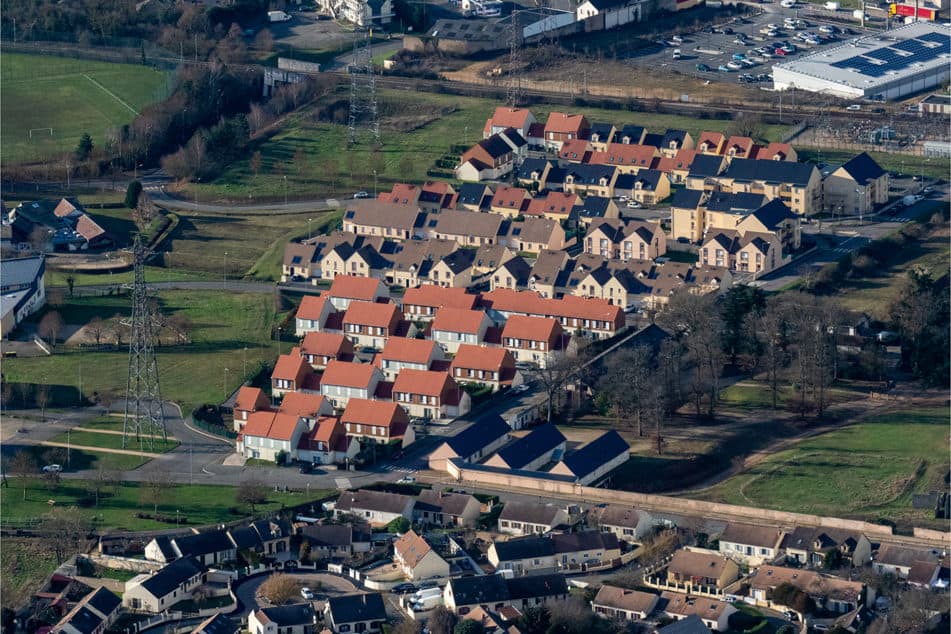
The ZNA goal
23,000 hectares: this is the average annual area of natural, agricultural or forest land reallocated to urbanisation in France over recent years, the equivalent of 2.2 times the area of Paris, 33,000 football pitches or 19 million parking spaces. A figure which makes France one of the worst European students with regard to restraining real-estate development. The impact on biodiversity and CO2 emissions are such that there is an urgent need to hold back this effect.
Zero net artificialisation by 2050. ZNA will be enshrined in law, specified by the Climate and Resilience Bill. This goal was set by the 2018 Biodiversity Plan, already present in the 2014 ALUR Act, without determining a national strategy to achieve it (local authorities are responsible for taking the necessary measures). Adopted by the National Assembly in May, the bill to combat climate change and strengthen resilience to its effects, which stemmed from the work by the 150 members of the Citizens’ Climate Convention (CCC) from 2019 to 2020, is being debated in the Senate in June 2021.
Before achieving the ZNA goal, in 30 years the government is hoping to “halve the rate of land artificialisation over the coming decade compared to the past decade, an objective that will be implemented in the territories”, according to a press release from the Council of Ministers dated 10 February 2021.
“If nothing is done, the equivalent of the surface area of Luxembourg will be covered in concrete and asphalt by 2030,” warns a 2019 report by France Stratégie, a think tank attached to the Prime Minister’s office.
Each year, the Ministry for the Ecological Transition states that construction and development work uses up “between 20,000 and 30,000 hectares”, a rate four times faster than population growth. This increase is being seen in areas where the population and jobs are not growing, and is due to the fact that French people want homes with a garden, there are fewer people per home, shopping and leisure areas are present on the outskirts of towns and there is a proliferation of transport infrastructures to connect them together and to the existing urban fabric, thereby creating artificialised areas.
According to the text of the Climate and Resilience Act, “land is considered artificialised when its occupation or use permanently affects all or part of its functions. Open land areas are not considered artificial”. Soil and land are not just the surface layer of the earth, supporting human activities; they also house ecosystems. Compacting, terracing, sealing, polluting, draining and fragmenting land and soil has repercussions on living organisms and their environment. According to a 2019 global report by IPBES, an international group of experts on biodiversity issues, human-induced land-use change alone accounts for more than 30% of terrestrial biodiversity loss. Like agricultural expansion, artificialisation is a major component of this change in use.
As such, “there are two aspects to the impacts of land artificialisation,” stresses Léonie Yang, head of foresight at Bouygues Construction and author of a summary document entitled “The goal of Zero Net Artificialisation in France: quantitative [and] qualitative”.
Currently, the proportion of land considered artificial is 9%, 15% higher than in Germany and 57% higher than in the United Kingdom, according to the National Network of Developers (RNA). To stay as close as possible to this figure, according to the draft Climate and Resilience Act, all urban planning documents drawn up at a local level, regional planning documents (SRADDET), territorial cohesion schemes (SCoT) and inter-municipal local urban plans (PLUi) will need to integrate the ZNA goal set out in articles 46 to 53 of chapter III of the Climate Act.
There are three main objectives, the chapter explains: push for the requalification of existing wastelands – which is already an objective of the 2018 Elan law –, provide for the reversibility of buildings and curb the development of suburban shopping districts.
“Elected officials are faced with a series of contradictory orders,” comments Patricia Savin, a lawyer at the Paris bar, head of the Sustainable Development open commission and a local councillor in Garches: “To renaturalise during a period of reindustrialisation and industrial relocation, and to show restraint in terms of land use when there is a growing need for housing and public facilities.” For example, the Paris region is growing by more than 50,000 inhabitants each year, its president Valérie Pécresse noted in an interview with “Les Echos” in May 2021.
“Lastly, there is a very subjective element in the way each person views the land and its occupation,” concludes Patricia Savin. “But we will have to converge towards a common vision, given the goal: the preservation of biodiversity.” Our very survival depends on it.
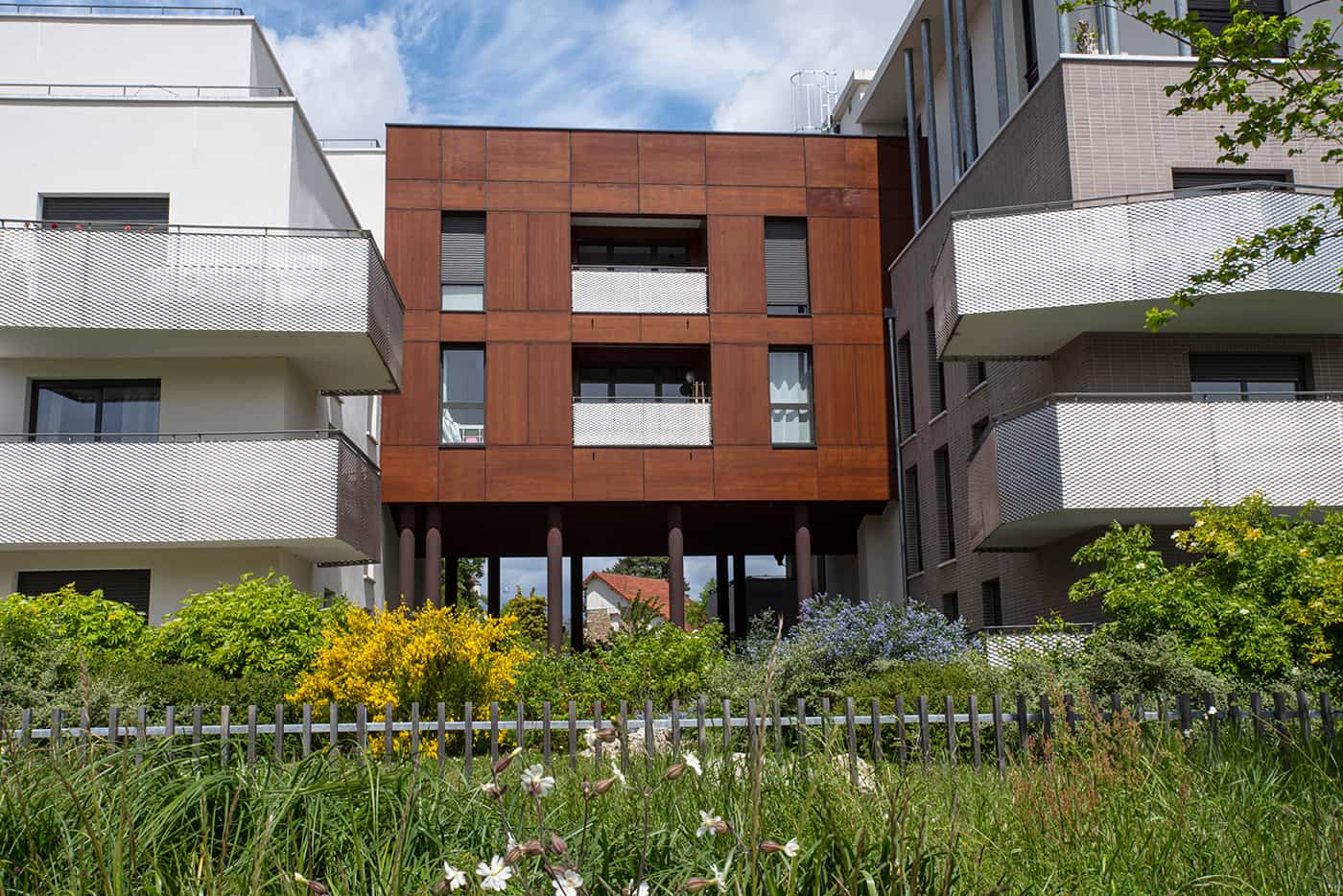
Levers for zero net artificialisation
“We can’t wrap up nature in cotton wool, we’ll have to continue building,” acknowledges Jean-Philippe Teilhol, chief representative of France’s National Union of Landscape Companies (UNEP). “Even if we mobilised every vacant home we wouldn’t be able to house everyone.”
The decline in household size, the attraction of the single-family home, the increasing vacancy rate and the construction of second homes, for example, explain why construction is continuing. Moreover, according to Eurostat projections, the French population will continue to grow in the coming years, reaching 78 million in 2080.
However, according to France Stratégie, ZNA will make it possible to limit land artificialisation to 1,200 hectares per year throughout the country, compared with 20,000 to 30,000 hectares in recent years. The main idea will be to “rebuild the city on the city” and make do with what already exists by following the ARO (Avoid, Reduce, Offset) sequence as a guideline, which is already applied in the search for “zero net loss of biodiversity” according to the 2016 Biodiversity Act.
DENSIFICATION
Contrary to popular belief, the densification of buildings can be a good thing for cities, points out Carlos Moreno, associate professor at the IAE in Paris and co-founder of the ETI chair “Entrepreneurship, Territory, Innovation” at the Sorbonne, interviewed by “Usbek et Rica” on 15 June 2021. It is made easier by the ALUR Act of 2014 abolishing the maximum built density per plot in urban planning documents.
“Density is actually a good thing, without it there’s no pooling, and without pooling you can’t set up services for everyone. Density isn’t a dirty word, it can feed into a calming vision of the city and promote a city that feels good,” he adds.
Wood, a material five times lighter than concrete, allows multi-storey eco-constructions to span a traffic lane or raise a building: examples include Woodeum’s project for residences for students and young athletes in the Paris suburbs, and Linkcity’s youth hostel, a five-storey elevation above a supermarket on Place de la Nation. The aim is to move towards denser – but liveable – urban forms that provide comfort while limiting the amount of land used.
In Paris, the Parisian Urban Planning Workshop (APUR) has estimated that 10,000 buildings could be raised. In Lyon, several buildings have already undergone this process in the 3rd and 6th arrondissements.
On the outskirts of cities, David Miet and Benoît Le Foll’s Villes Vivantes agency, which pioneered the “BIMBY” (Build In My Backyard) concept, is convincing residents to restrict urban sprawl by sharing plots of land. It supports them in this type of biodiversity-friendly habitat.
BROWNFIELD REDEVELOPMENT
In this context of economical land management, industrial, commercial, railway, military and hospital wastelands, concentrated mainly in the north and east of France, are opportunities, as part of a circular urban planning rationale advocated by Sylvain Grisot (Manifesto for Circular Urban Planning, 2020). A €650 million fund (brownfield fund) has been created by the French Ministry for the Ecological Transition, intended for the conversion of 1,300 hectares of this type of land.
Wasteland is “a space on which activity has halted and is therefore abandoned”, according to France’s laboratory of innovative land and territory initiatives (LIFTI). The BASOL and BASIAS databases list polluted or potentially polluted sites and land (35,000 sites). However, all wasteland in France is currently being inventoried using Cartofriches, a tool developed by the centre for studies on risks, the environment, mobility and urban planning (Cerema).
Most of these abandoned spaces can be reconverted: in Dieppe, the former tobacco hall was renovated in 2020 and converted into a cultural venue, multiplex cinema and restaurants; its surroundings were adapted to increase soil infiltration and spontaneous vegetation has grown there. The Le Foué Paul Prédault ham production plant, which relocated to Goussainville, a 13,000 m² facility, was reclassified as an attractiveness centre for SMEs by Essor Développement in June 2021. During the same month, a former Trois Suisses industrial site, La Maillerie, located between Villeneuve d’Ascq and Croix, and converted into an eco-neighbourhood by Linkcity, opened to its new residents.
However, economic developers and elected officials are worried because wasteland owners are usually more willing to convert it into profitable housing than transform it into a place of business, as is the case with the former Castorama store in Mérignac, which is scheduled for completion in 2022. The Dassault site in Argenteuil, which is moving to a 50,000 m² site in Cergy Pontoise, leaves 9 hectares in the heart of the city. The mayor is refusing to convert it to housing; he wants to revitalise the community by bringing economic activity back to the area where the inhabitants live, based on the quarter-hour city model.
OFFSET
It was noted during the Senate hearings that the number of wasteland sites could increase due to the dual effect of the digitisation of the economy and the economic crisis caused by the Covid pandemic. Some wasteland sites could act as “green lungs” near city centres or on the outskirts, provided they are de-artificialised.
While the bill proposes a definition of “artificialisation”, it doesn’t offer a definition of the opposite. According to the agro-pedologist Xavier Marié, de-artificialised land has regained functions similar or close to those of its original state. “Take the example of deconstructed buildings, the joint development zone Gagarine, in Ivry-sur-Seine: in the decompacted subsoil of the demolished cellars, the developer reconstituted fertile soil to create a nursery,” he says.
The car park of the former bus station in Auchel (Pas-de-Calais) has been cleared of the waterproofing and pollution that made it so dirty, and has once again become a green area returned to nature. On a more ambitious level, the public land development establishment (EPF) Nice Ecovallée, in Alpes Maritime, is planning to remove 250 hectares of urban areas to make room for 125 hectares of agricultural and natural areas along the Var plain. The Loire Atlantique department wants to renaturalise abandoned roads that are still asphalted.
However, renaturisation comes at a cost: around €65 per square metre to deconstruct, €60 to €270 per square metre of land to increase soil infiltration, according to France Stratégie, and between €100 and €400 per square metre to decontaminate.
Daniel Nahon, from Université Paul Cézanne, is pessimistic about the effects of this spending. He believes it isn’t possible to “return to nature the equivalent of the surface area used, as mineralisation is an irreversible process that makes the soil sterile and its clays impermeable.” “Destructive major projects: the bluster of ecological offsetting” stated a headline in “Reporterre” on 6 September 2019.
BUILDING DIFFERENTLY
Avoid (damage and destruction) is also the part of the ARO process to focus on. New forms of construction are emerging, particularly reversible constructions, such as the #Work1 building in Lyon’s Confluence district. This eight-storey office building developed by Linkcity and built by Bouygues Bâtiment Sud Est will be converted into housing in a few years’ time when the A7 motorway, which runs nearby, is downgraded to an urban boulevard; the more qualitative environment will enable this change of use.
Construction on piles, which have a lower ecological impact than construction on slabs, seen in eco-neighbourhoods such as Brazza in Bordeaux, is also part of the models of the future.
The regional elections are an opportunity to examine new housing methods to achieve the ZNA goal, to “put an end” to “poor housing” and “urban ghettos” (a campaign promise made by Valérie Pécresse, the Libres! candidate, as well as Audrey Pulvar, the PS candidate, in the Paris region).
As for companies in the construction industry, they “could pivot from traditional civil engineering to ecological engineering, therefore being able to stand out from the competition via de-artificialisation demonstrators”, according to the Biodiversity Economy Mission, in the Biodiv’2050 report of April 2021.
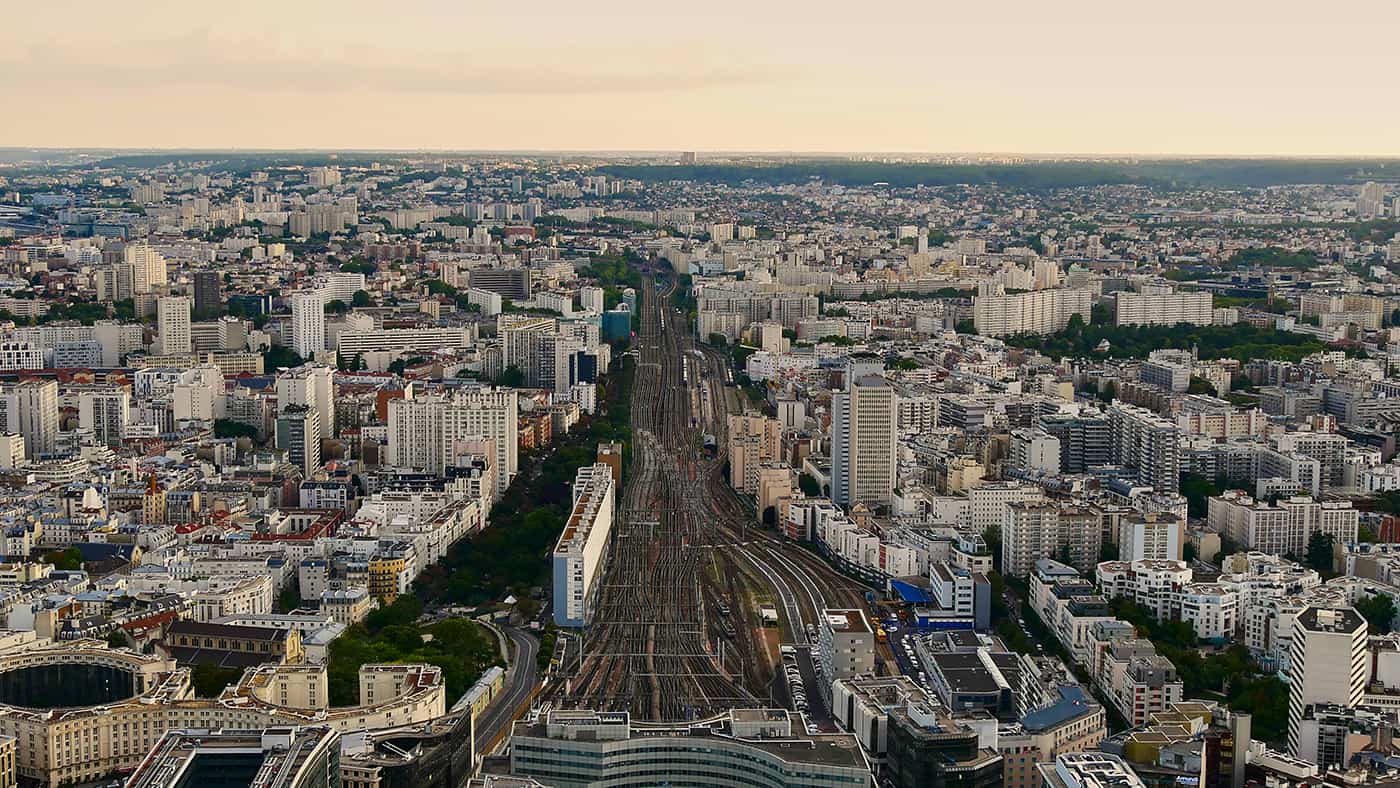
The tools of local authorities
Although the goal of zero net artificialisation is a national one, it will become a reality in local projects – and it is elected representatives who will be at the helm.
A government instruction was sent to prefects on 27 July 2019, asking them to provide “close support to local authorities so that territorial development projects incorporate the principle of combating the consumption of space”. It adds: “As such, you will ensure that the fight against artificialisation is properly taken into account in development strategies, when defining projects and implementing them.”
Furthermore, in a report dated 12 May 2021, the Senate’s economic affairs committee proposed to territorialise ZNA and give local areas the power to set new targets to combat artificialisation. It stresses that municipalities and inter-municipalities are already fully committed to designing simpler territorial projects.
“The measures are not written on a blank page but are based on existing tools.”
URBANISM PLANS
The goal of zero net artificialisation must first be integrated into planning and urbanism documents in order to regulate land, define the areas to urbanise or preserve, and take into account the share of nature in the city in the green infrastructures necessary to make densification acceptable.
The 2019 IPBES report highlighted the correlation between biodiversity, sustainable urban planning and a climate compatible with human life. The SRADDET (regional plans for land use and sustainable development) and SCoT (territorial cohesion schemes) identify the most favourable sectors for the development of biodiversity, green and blue corridors (black for darkness, brown for soil, white for sound) to implement effective urban planning and create natural habitats in these urban landscapes.
The SRADDET still provides the means for local authorities to be competent in developing building renovation policies. They can support and monitor the renovation projects of citizens and businesses, in territorial revitalisation operations (ORT) for example, by enlisting the help of specialised players (Cerema, public real estate establishments (EPF), national housing agencies (ANAH), the Scientific and Technical Centre for Building (CSTB), architecture, urban planning and environment consultancies (CAUE), etc.).
This makes it possible to act on the vacancy rate of buildings, which is thought to be nearly 10% compared to 2% in Switzerland and 2% in Germany, amounting to three million vacant dwellings. Once the causes have been identified (dilapidation, works, disinterest, inheritance, etc.), measures can be taken to renovate them: the City of Paris recently issued a compulsory purchase order to the owner of a hotel in the 14th arrondissement that has been closed for ten years, in order to turn it into a low-cost housing project, announced Ian Brossat, Deputy Mayor of Paris responsible for housing, emergency accommodation and the protection of refugees, on 16 June 2021.
TAXES
Fiscal tools are also beneficial tools in achieving ZNA. Within their abilities, municipalities can tax second homes (3.6 million in France according to the French national institute of statistics and economic studies – INSEE) and curb their proliferation, particularly on the coast and in mountain areas.
But as it currently stands, French law tends to favour the artificialisation of land, points out Maylis Desrousseaux, a lecturer at the CNAM specialising in land protection. This is confirmed by Biodiv’50, the April 2021 report by the Biodiversity Economy Mission of the Caisse des Dépôts and CDC Biodiversité. “Public subsidies from departmental councils to build cycle paths in agricultural areas or woods”, “to support the construction of new housing”, contribute to this.
In addition to these comments, the report provides solutions for changing the tax system in order to combat artificialisation.
RAISING AWARENESS
Lastly, it is a question of raising awareness among both the population and “builder-mayors” about the preservation of land and biodiversity. “We need to raise awareness through the dissemination of knowledge,” recommends agro-pedologist Xavier Marié in the interview that closes this report. What is living soil? How does it work? How does it serve people through its multiple uses?
We also need to change our atavistic ideal of living together in France: everyone in their own home on their own plot of land.”
Several municipalities are therefore developing the BIMBY (Build In My Backyard) approach to encourage owners in suburban neighbourhoods to divide their plots and build another home on them, in order to develop soft densification.
Not all local elected officials will be equal in applying the law. André Chassaigne, president of the Gauche Démocratique et Républicaine group at the National Assembly, says that the draft law against artificialisation will mainly benefit large metropolitan areas, “to the detriment of rural areas”, whose vitality will be curbed. In addition, the National Union of Developers (UNAM) stressed in a press release on 16 March that far from responding to the proposal by members of the Citizens’ Climate Convention to restore the attractiveness of small towns and villages, the rule would lead to a densification of cities.
These economic arguments are not unfounded. However, ZNA, which is enshrined in law, ensures that local areas face up to their ecological responsibilities: 20% of French municipalities are responsible for 81.7% of the consumption of space, according to Cerema Hauts-de-France (2019). Urgent action is needed to secure everyone’s future.
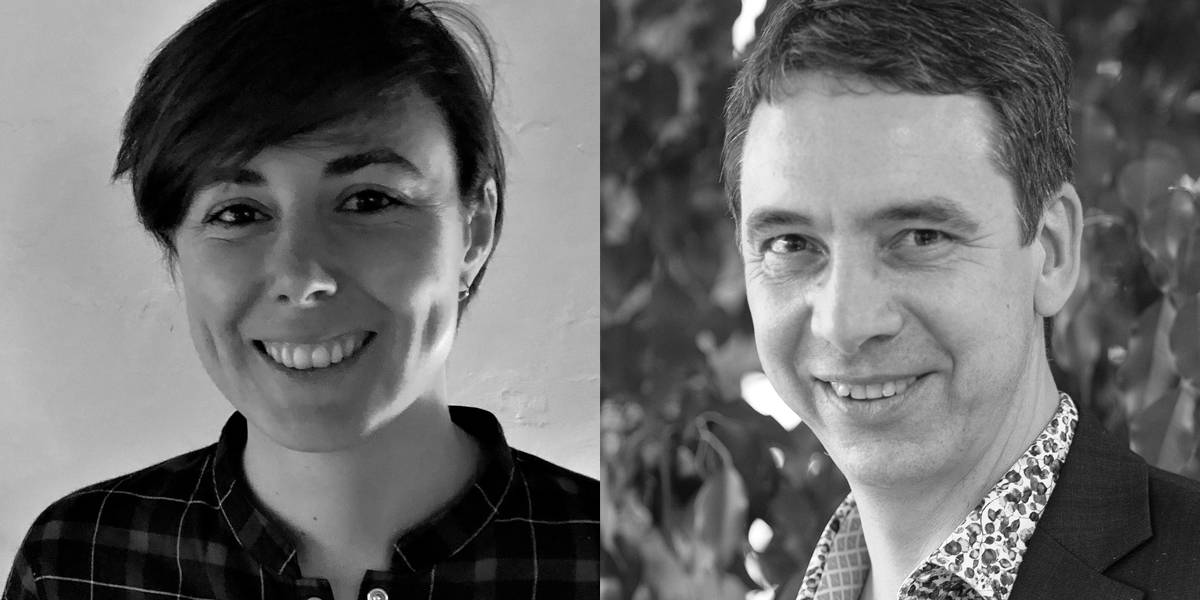
Tending to ZNA while remaining zen
JOINT INTERVIEW
Why is the fight against land artificialisation central to the Climate and Resilience Act? What is land for a naturalist? What about a lawyer? How can we ensure the functioning of land while meeting construction needs? How can we understand the three-pronged aim “avoid-reduce-offset” to avoid failing to achieve the ZNA goal?
We spoke to MAYLIS DESROUSSEAUX, lecturer in public law at the CNAM, coordinator in 2017 of a collective scientific assessment of land artificialisation at the National Research Institute for Agriculture, Food and Environment (INRAE), and XAVIER MARIÉ, agro-pedologist (specialist in the formation and functioning of soil), landscape engineer, urban planner, and founder and director of the Sol Paysage consultancy firm.
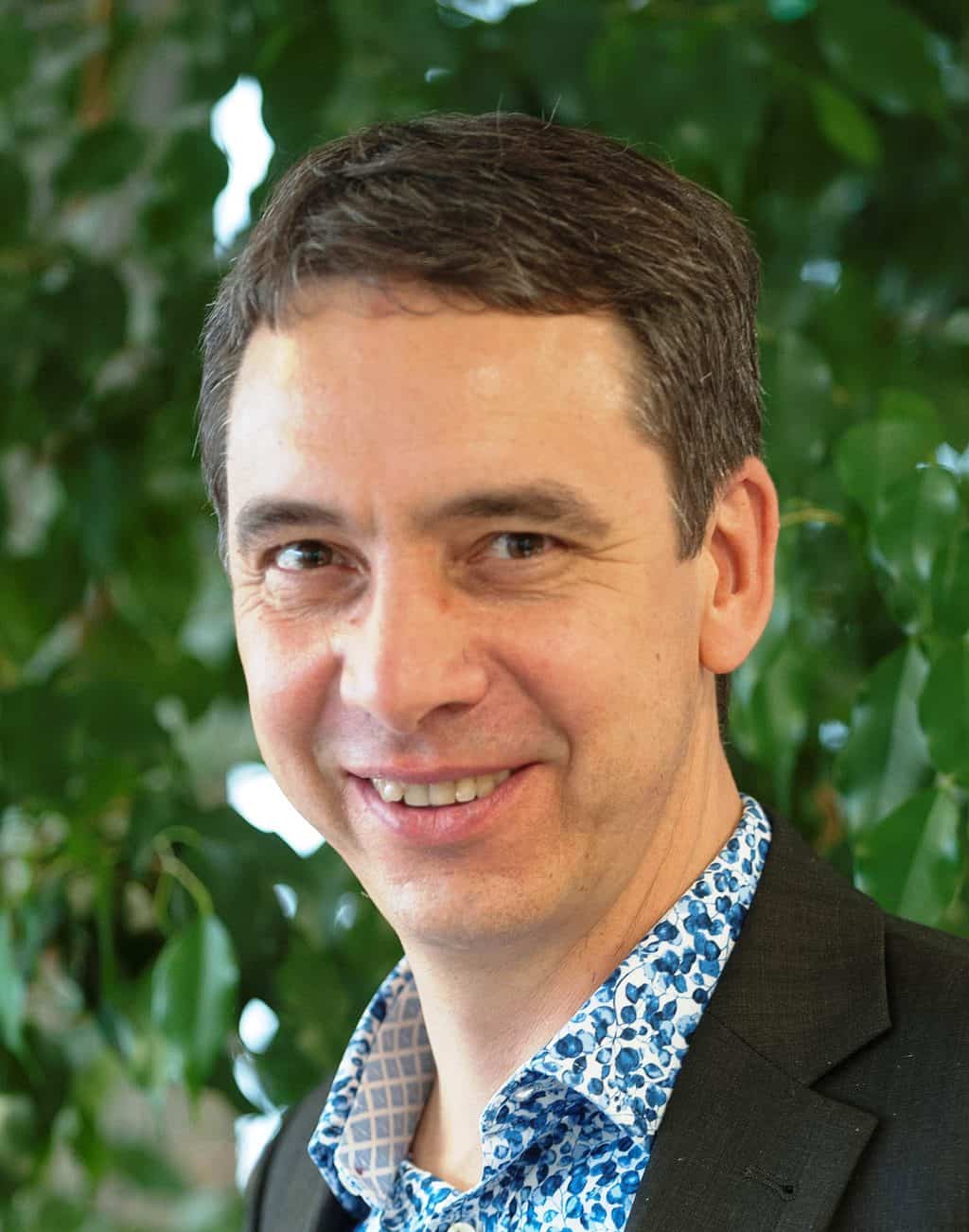
WHAT ARE SOIL AND LAND? WHAT IS ARTIFICIAL LAND?
XAVIER MARIÉ – Land and soil are the living skin of the Earth. Produced from the earth’s crust (source rock or lithosphere), soil interacts with the biosphere (the animals or plants that traverse it), the atmosphere and the hydrosphere (water seeps into the porous soil and comes out as water vapour through photosynthesis).
France has a variety of soil, from the very thick soils of the Beauce or Brie plains, formed by accumulations of silt, to the soils of the tip of Finistère, clinging to the cliffs by a centimetre or two.
For the naturalist pedologist, there is only natural soil. If it has been altered by man, artificialised to varying degrees, it is called an anthrosol: one example is the Buttes-Chaumont Park in Paris, which was built on a former quarry. This large hole was filled with various materials and then covered with a certain thickness of soil from the market garden areas, the “area beyond” the first ring of Paris.
ARE ALL URBAN SOILS ANTHROSOLS?
X. M. – No, some of them are still natural, a bit by chance, at the bottom of a garden or in a park that hasn’t been disturbed too much. And in rural areas not all of them are natural: the beautiful vineyard terraces that make up many landscapes in the south of France have been shaped by man, from the primary natural materials found there.
WHERE DO OUR DIFFERENT IMAGES OF THE SOIL AND LAND COME FROM: A FLOOR, A STRIP OF ASPHALT, ETC.?
X. M. – In French, the different meanings of the word “soil” – either soil or land – come from the shift from a naturalistic approach to a utilitarian approach. Man – a biped subject to gravity – needs to move on a medium, no matter which one; walking on a pavement or in a field is to move forward on soil or land.
This different meanings of the word create confusion not only about what “soil” is, about the different images it conveys, but also about the definition of “artificialized”. When geographers and pedologists try to define “artificialised soil or land”, they agree that it is soil or land far removed from its original natural state and that it has lost some or all of its original natural properties. But if man has managed to reconstitute the natural functions of soil, as in the Buttes Chaumont Park, should we still describe it as “artificialised soil”?
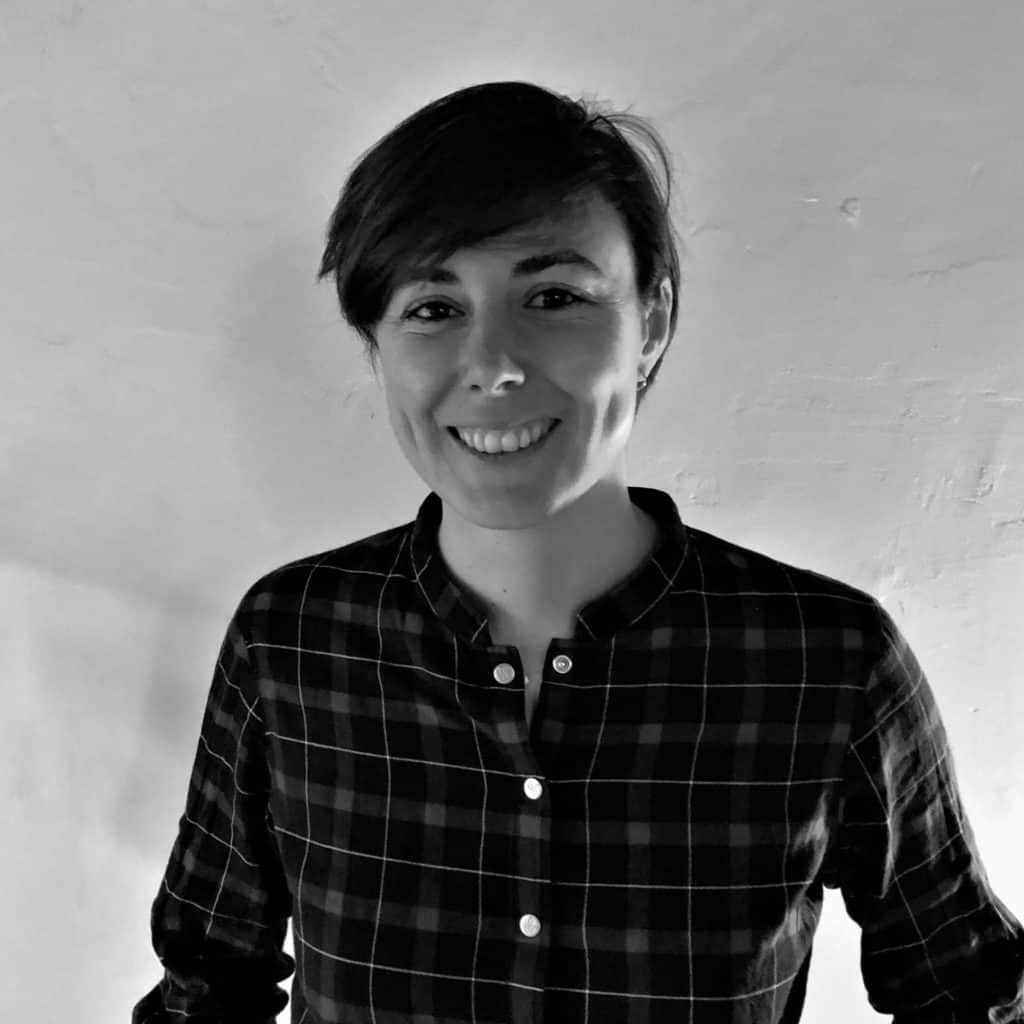
IS SOIL OR LAND A LEGAL CONCEPT? TO WHAT EXTENT DOES THE LAW RECOGNISE ARTIFICIALISATION?
MAYLIS DESROUSSEAUX – There is no legal definition of soil or land as a natural environment. There was a draft definition of soil, in terms of its ecological, economic and social functions, in the framework directive on soil protection proposed in 2006 by the European Commission.
However, the “Soil Directive” was withdrawn after a minority of countries, including France, Germany and the UK, vetoed it for different reasons. In France’s case, the creation of an inventory followed by the (costly) management of polluted soils seems to have been behind the move to block it.
This situation illustrates the fact that soil remains an object of national law, subject to the principle of state sovereignty, without consideration for the international dimension that its damage takes on: it leads to desertification, jeopardises food security, causes the erosion of biodiversity and, during changes of use, methane and CO2 emissions, etc.
In French law, the meanings of soil and land are nowadays linked to the use and the activity carried out on them. However, the Climate Act, in the section on combating soil and land artificialisation, brings an expected change by linking artificialisation to the ecological functions of soil, with the exception of agricultural land which is excluded from this category, regardless of its functionality. A decree will subsequently specify these functions and the degree to which they are affected, which will necessarily guide development projects to limit this artificialisation.
As for artificialisation, it was previously (and originally) a mere statistical concept created by the statistics department of the Ministry of Agriculture in the 1980s to measure, on a three-yearly basis, the consumption of agricultural land, using the Terruti-Lucas tool. Transformed into a public policy objective, notably in the 2018 Biodiversity Plan, it will be given a new legal dimension with the Climate and Resilience Act.
IT REALLY POSSIBLE TO OFFSET ARTIFICIALISED AREAS IN ONE PLACE BY DE-ARTIFICIALISING THEM IN ANOTHER?
M. D. – Scientific research on the success of initiatives to offset biodiversity damage has shown that very few of them actually offset the impacts of the projects for which they are carried out. The goal of achieving a biodiversity gain is reached to an even lesser extent. With the implementation of ZNA and the de-artificialisation obligations liable to result from it, there’s reason to be concerned about a repeat of this situation, especially since the question of the duration of the offsetting measures, on which their effectiveness largely depends, remains unresolved: the de-artificialised areas shouldn’t subsequently become land stocks in the medium term. Soil and land are a finite resource and this characteristic should exclude them from offsetting measures.
Another question is that, according to the current legislative definition, open areas have been excluded from the category of artificialised soil and land, regardless of their functionality. In implementation, this should encourage the developer to preserve these spaces without offering offsetting (it won’t have to de-artificialise elsewhere). This can be a good thing, especially from the perspective of preserving nature in urbanised areas.
However, it’s unfortunate that no attention is paid to the quality of these spaces, which can vary greatly. For example, a study launched in Montreal, ahead of the upcoming annual increase in precipitation, showed that in this type of land the carrots didn’t grow down more than 20 cm! Although the soil was considered non-artificial, it didn’t have the anticipated absorption capacity and therefore its cover had to be modified in order to adapt the city to climate change.
Above all, it’s necessary to work on the “avoid” part of the “avoid-reduce-offset” sequence and to allow the reversibility of the soil, i.e. returning a site to its natural state, by building on piles for example.
X. M. – This is a very important subject. Firstly, offsetting doesn’t mean justifying artificialising in one place by de-artificialising in another, rather it encourages the preservation of a part of nature in one place when the soil or land is artificialised in that place. Because we don’t build for nothing! We do it to house people who also need green and freshness. It’s therefore a question of rolling up our sleeves to know how to produce a functional nature at the foot of a building, in functioning ecological corridors, towards connected reservoirs.
Secondly, it has to be recognised that in urban areas where the vast majority of land has been artificialised and has lost its natural functions, there is nevertheless land that has regained these functions, thanks to the economic model of development that de facto finances nature in the city through its landscaping programmes, from building lots to large public spaces.
What’s more, in the French pedological reference system, the definition of reconstituted anthrosol is scientifically based. It’s a bit difficult to de-artificialise a building, but it can be done! Take the example of deconstructed buildings, the joint development zone Gagarine, in Ivry-sur-Seine: in the decompacted subsoil of the demolished cellars, the developer reconstituted fertile soil to create a nursery.
But let’s not confuse de-artificialisation with reversibility. Returning already highly anthropised soil to a natural state isn’t possible strictly speaking. However, the reversibility of its agronomic or ecological functions using soil excavated from the surrounding area is quite possible. There’s a very key challenge behind this: if you’re a builder or a developer of wasteland but you offset by improving the initial degraded functions of its soils, you contribute to the de-artificialisation.
TO ACHIEVE ZNA, ONE OF THE DRIVERS IS TO DENSIFY CITIES. WHY IS THIS ARGUMENT SOMETIMES CONTESTED?
M. D. – The collective scientific assessment on soil and land artificialisation, conducted by the INRAE (2017), showed that biodiversity can be maintained in cities, but beyond a certain threshold of densification it collapses. We therefore need to be careful not to exceed this threshold and think in terms of functionality, which can be made possible by the biotope coefficient. This optional tool, integrated into the regulations of local urban planning schemes, makes it possible, for renovation and new construction projects, to impose factors favourable to biodiversity at the plot level. On the other hand, the link to the soil (and to the open ground) isn’t a necessity.
X. M. – An ecologist will tell you that it’s better to limit the footprint as much as possible and to have more floors. But if we know how to build housing estates taking into account the ecological functions of the soil and land, without fragmenting agricultural or natural areas, we also limit the damage caused by artificialisation.
Our consultancy firm is involved in a research programme on the territories of the Plateau de Saclay, a winning project in a national call for project tenders organised by France’s Urban Planning, Construction and Architecture Plan (PUCA) in 2020. We’re trying to find out whether there are earthworms from public spaces to gardens, whether functional soils rich in biodiversity can be found in suburban or dense collective housing and whether continuities can be found in the brown corridors of urban systems such as the new town of Saint-Quentin-en-Yvelines.
Whether it’s a question of densifying or extending cities, the problem is the quantity, quality and continuity of the ecological corridors. We can’t densify or spread out in just any old way.
THE SECOND LEVER TO AVOID FURTHER ARTIFICIALISATION IS TO RESTORE AND REBUILD BROWNFIELD SITES. IS IT POSSIBLE TO DO SO AND UNDER WHAT CONDITIONS?
X. M. – It is possible to clean up these “underused areas” but it can be extremely expensive! The situation requires an economic equation favourable to urban renewal: producing construction programmes whose sale will balance the costs of reducing environmental liabilities. This can’t be done without a very strong proactive policy from the State to decontaminate. Its assistance to local areas, or to the developers who work for them, is essential in order to have decontamination budgets commensurate with the disasters they inherit.
For orphan sites that can’t be renovated and/or managed by the ADEME, no other projects are possible – for economic, political and ecological reasons – than limiting the environmental and health impact. However, these sites represent very little on the scale of a local area.
HOW CAN WE ENSURE FRENCH PEOPLE’S SUPPORT FOR ZNA?
X. M. – We need to raise awareness through the dissemination of knowledge. What is living soil? How does it work? How does it serve people through its multiple uses?
We also need to change our atavistic ideal of living together in France: everyone in their own home on their own plot of land. This idea was reinforced in the mid-1970s by reorienting funding policies from collective housing to individual housing. Covid added another layer to this because it wasn’t very pleasant to be very densely packed, with a lot of people and very contaminated. City dwellers have started to dream of isolated housing in nature…
But if everyone follows this model, there’s no more nature.
Living together, accepting a certain level of density, sharing urban and suburban nature, means preparing a common future together.
(1) Béchet B., Le Bissonnais Y., Ruas A. (pilotes), Aguilera A., Andrieu H., Barbe E., Billet P., Cavailhès J., Cohen M., Cornu S., Dablanc L., Delolme C., Géniaux G., Hedde M., Mering C., Musy M., Polèse M., Weber C., Frémont A., Le Perchec S., Schmitt B., Savini I., Desrousseaux M., 2019. Sols artificialisés : déterminants, impacts et leviers d’action, éditions Quæ, 182 p.
Photo de couverture : Zone périurbaine de l’agglomération de Chalon-sur-Saône, © Christian Slagmulder, Inra.
